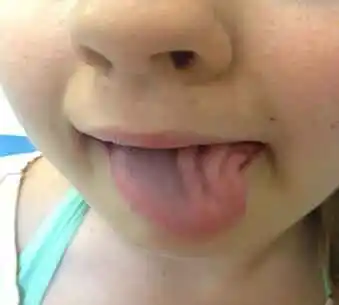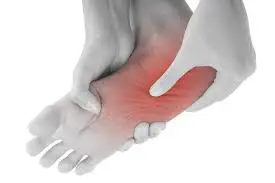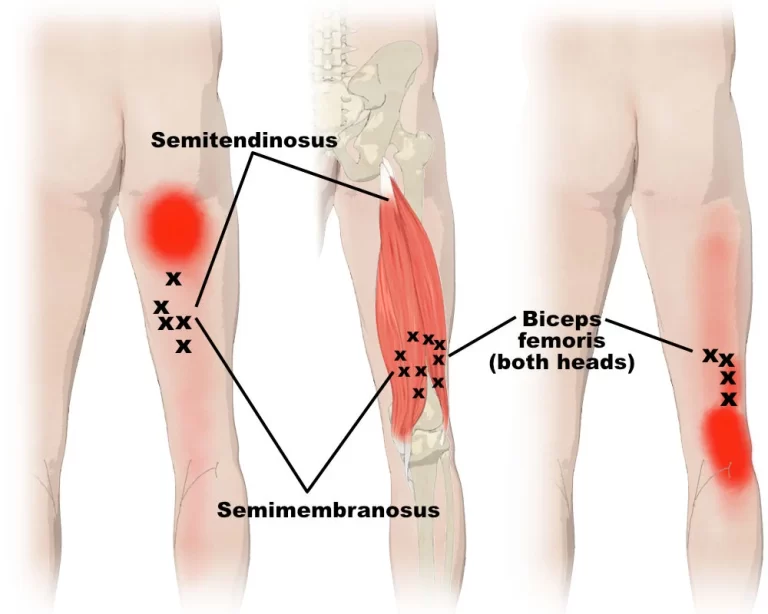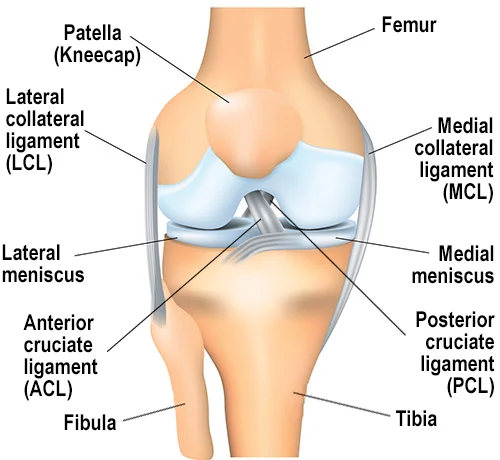Hypoglossal Nerve Palsy
Hypoglossal nerve palsy or paralysis is an occasional but clinically serious disorder that results from affecting the hypoglossal nerve (cranial nerve XII). The tongue’s intrinsic and extrinsic muscles, which are mostly supplied by this nerve, are essential for speaking, swallowing, and keeping the airway’s purity.
These abilities can be severely impaired by damage to the hypoglossal nerve. This article contains causes, symptoms diagnosis & treatment for hypoglossal nerve palsy.
What is Hypoglossal Nerve? Anatomy and its function
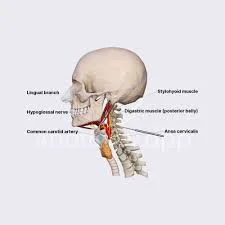
- Among the twelve cranial nerves is the hypoglossal nerve. It is additionally often referred to as cranial nerve 12, CNXII, or the twelfth cranial nerve.
- Your brain’s base is where this neuron begins. It starts at the base of your tongue and ends at the base after branching out and traveling down your neck.
- The hypoglossal nerve allows the tongue to move. The genioglossus, intrinsic, styloglossus, and hyoglossus muscles contract as a result of it. These muscles support your ability to swallow, talk, and move objects around in your mouth.
- A motor neuron sends and receives information from the brain to control muscle contraction.
Anatomy
The hypoglossal nerve begins at the brain stem, which stretches from the base of the brain to the top of the spinal cord. Before it reaches the tongue, it
- Reaching the cervical plexus after descending the spinal cord. The neck and trunk can move and sense because of the complex structure of nerves.
- Passes by the carotid artery and jugular vein, two major blood arteries, as it descends the neck.
- Passes past the back of your throat and reaches the bottom of your mouth.
- Branches out to create connections with the muscles that regulate the various tongue movements.
Function
The hypoglossal nerve regulates the tongue’s movable muscles, enabling you to:
- Move objects around in your mouth while you chew on them.
- Speak.
- Swallow.
Which muscles are controlled by the hypoglossal nerve?
The 12th cranial nerve regulates the:
- The tongue gets pushed forward by the genioglossus muscles.
- The tongue is pulled back and straightened by the hyoglossus muscles.
- The tongue’s intrinsic muscles are capable of causing the tongue to twist and narrow.
- The styloglossus muscles are responsible for controlling tongue elevation and depression.
What is the Hypoglossal Nerve Palsy?
Hypoglossal nerve palsy is the phrase used to define the paralysis of the twelfth cranial nerve. The hypoglossal nerve serves as motor control to the tongue and the hyoid depressors. The clinical characteristics of hypoglossal nerve palsy are as mention below.
- Tongue motions in response to commands: side to side, etc. The tongue that has been partially denervated shifts to one side of the lesion.
- The capacity to use the words “la” and “ta” demonstrates better control.
Causes of the Hypoglossal Nerve Palsy
The following conditions cause hypoglossal nerve palsy
- In severe cases of amyotrophic lateral sclerosis (ALS), communication between the brain and the hypoglossal nerve may be compromised.
- Encephalitis: When there is inflammation, the brain stem may compress the hypoglossal nerve.
- Head and neck cancer treatments have the potential to harm adjacent tissues, including the hypoglossal nerve.
- Most cases of sleep apnea are caused by the hypoglossal nerve, which affects the muscles in the back of the throat. During sleep, your tongue may slide out of place and block your airway if it relaxes too much.
- Stroke: A reduction in blood flow may impact the brain’s capacity to interact with the hypoglossal nerve.
- Trauma: The hypoglossal nerve can be severed in major incidents such as stabbings.
Symptoms of the Hypoglossal Nerve Palsy
The clinical manifestations of hypoglossal nerve palsy involve the following.
- Lack of tongue movement power.
- When examined at rest, tongue wasting and fasciculation can be observed. These signs appear to indicate there is an injury to the lower motor neurons.
- In a unilateral lesion, the patient’s tongue will deviate to the side that is more affected if he sticks it out toward the examiner.
- A small, immobile tongue is the typical symptom of an upper motor neuron lesion of the hypoglossal nerve, which is typically bilateral. Bilateral upper motor neuron injuries to the cranial nerves nine, ten, and twelfth cause pseudobulbar palsy.
Other possible symptoms are:
- The tongue is paralyzed or weak on one side.
- Having difficulty protruding your tongue.
- When something sticks out, the tongue veers to the weaker side.
- Speech issues, such as slurring or having difficulty pronouncing specific words.
- Drooling
- Swallowing difficulties
Diagnosis
- Clinical Examination: A physical examination and questions about your medical history will help a doctor diagnose hypoglossal nerve palsy.
- The genioglossus, intrinsic, styloglossus, and hyoglossus muscles contract as a result of it. Neurological screening can be used to observe atrophy, fasciculations, and tongue movement.
- Imaging Examination: The following tests are additional ones that the physician might ask for MRI or CT scans to find tumors, vascular anomalies, or structural lesions affecting the hypoglossal nerve.
- EMG/NCS: Electromyography (EMG): To verify nerve dysfunction and measure the tongue muscles’ electrical activity NCS or nerve conduction studies are used occasionally to assess the hypoglossal nerve and associated neural connectivity function.
- Blood tests: to rule out autoimmune, inflammatory, and infectious causes.
Treatment of the Hypoglossal Nerve Palsy
The plan of treatment for hypoglossal nerve palsy is based on the root cause. The nerve injury may get better on its own in certain cases. In certain cases, medical treatment may be required for treating the root cause.
- Medication: Using antibiotics to treat infections, surgery to remove tumors, managing vascular or neurological conditions, etc.
- Speech Therapy: Speech therapy helps improve communication and dietary changes to help with swallowing.
- Physical Therapy: Exercises to preserve tongue muscle function and strength are part of physical therapy.
- Surgical Treatments: Nerve grafting or surgical decompression may be considered in certain cases.
Physical Therapy for the Hypoglossal Nerve Palsy
Goals of physical therapy
- Increased tongue strength and mobility
- Reduced slurring and improved speech clarity
- Increased capacity to swallow
- Reduced drooling
Tongue strengthening exercises:
- Exercises that involve strengthening the tongue muscles without moving, such as isometric exercise sessions, assist in improving weak tongue muscles.
- Blowing, sucking, or pursing the lips are examples of exercises to increase general mouth muscle control, which will help with swallowing and communication.
- To enhance coordination and movement, the tongue muscles must be retrained. Specific tongue movements, such as holding, protruding, or pulling the tongue in various directions, may be practiced.
Electrical stimulation: To stimulate paralyzed tongue muscles and encourage nerve regeneration, low-level electrical stimulation may be utilized in certain situations. There hasn’t been much research on its effectiveness, yet limited use.
Complications of the Hypoglossal Nerve Palsy
The hypoglossal nerve palsy’s complications
- Speaking and swallowing difficulties
- Malnutrition
- Dehydration
- Pneumonia
Prognosis of the Hypoglossal Nerve Palsy
The underlying reason and efficiency of treatment have an important impact on the prognosis of hypoglossal nerve palsy. Better results depend on an early diagnosis and appropriate treatment of the underlying condition. While some individuals may regain their nerve function, others can have long-term problems.
Prevention of problems with the Hypoglossal Nerve
Problems with the hypoglossal nerve might affect your speech, eating, and swallowing. Certain causes, such as surgical complications and concussions, can be challenging to prevent. If you require a mouth or throat procedure, consulting with a skilled surgeon may help to reduce your risk.
You can prevent interference with the function of the hypoglossal nerve by taking care of yourself. Among these measures are:
- Long-term illnesses like ALS can be stopped from progressing by following to recommended treatments.
- Living a healthy lifestyle can help prevent strokes.
- You can prevent or delay sleep apnea by keeping a healthy weight.
- If you smoke, stop smoking, and drink less alcohol. These two factors guard against head and neck cancer.
Summary
The disorder known as hypoglossal nerve palsy has a wide variety of causes and important effects on swallowing, speech, and tongue function. Effective management of this condition requires a thorough medical evaluation along with specific treatment. Living a healthy lifestyle can help protect cranial nerve 12 from some of these illnesses.
FAQs
What would happen if the hypoglossal nerve was injured?
Tongue paralysis can happen if the hypoglossal nerve is injured. Usually, when someone sticks out their tongue, it affects one side and either deviates or points in that direction. First, the location and appearance of the tongue are noted when it is at rest.
What is the function of the hypoglossal nerve?
The hypoglossal nerve provides all of the motor functions for your tongue. The 12th cranial nerve is it. This nerve can be damaged, which can impact swallowing, chewing, and speaking.
What are the Causes of hypoglossal palsy?
Tumors, strokes, and disorders of the brain can all result in hypoglossal nerve palsy (HNP). It is frequently observed as a consequence of nerve injury after head and neck surgery. HNP seldom occurs on its own; more often, it coexists with glossopharyngeal, vagus, and accessory nerve palsy.
What is the hypoglossal nerve clinical examination?
Examining involves taking a look at the tongue, which is the hypoglossal nerve’s primary innervation target. Three characteristics of the tongue may be seen: dexterity, mass, and strength. If there is weakness, atrophied movement, aberrant movement, or impairment of the tongue, special attention is required.
What are the symptoms of hypoglossal nerve damage?
People find it difficult to swallow, chew, and speak as a result. The surface of the tongue exhibits small, subtle twitches known as fasciculations as a result of damage caused by amyotrophic lateral sclerosis.
References:
- Professional, C. C. M. (n.d.-j). Hypoglossal nerve. Cleveland Clinic. https://my.clevelandclinic.org/health/body/21592-hypoglossal-nerve
- O’Shea, P. (2022). Hypoglossal nerve palsy. Radiopaedia.org. https://doi.org/10.53347/rid-98541
- Hypoglossal nerve palsy. (2018, January 1). https://gpnotebook.com/pages/neurology/hypoglossal-nerve-palsy
- Simon, C. Z., Du, J. Y., Parel, P., Adida, S., Miller, P. M., & Qureshi, S. (2024). Hypoglossal & glossopharyngeal nerve palsy following anterior cervical decompression and fusion. JBJS Case Connector, 14(1). https://doi.org/10.2106/jbjs.cc.23.00372

